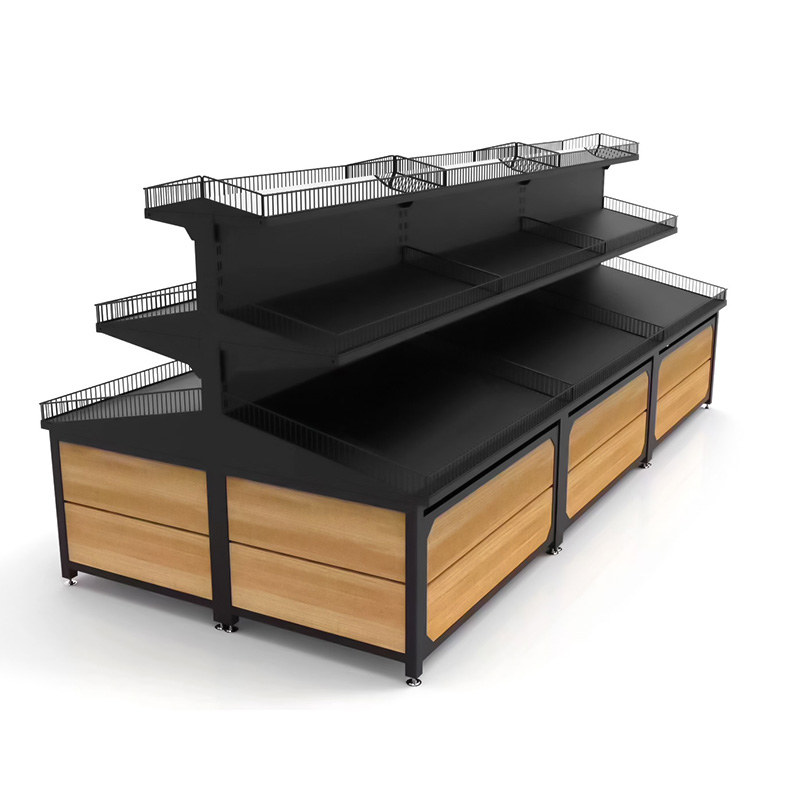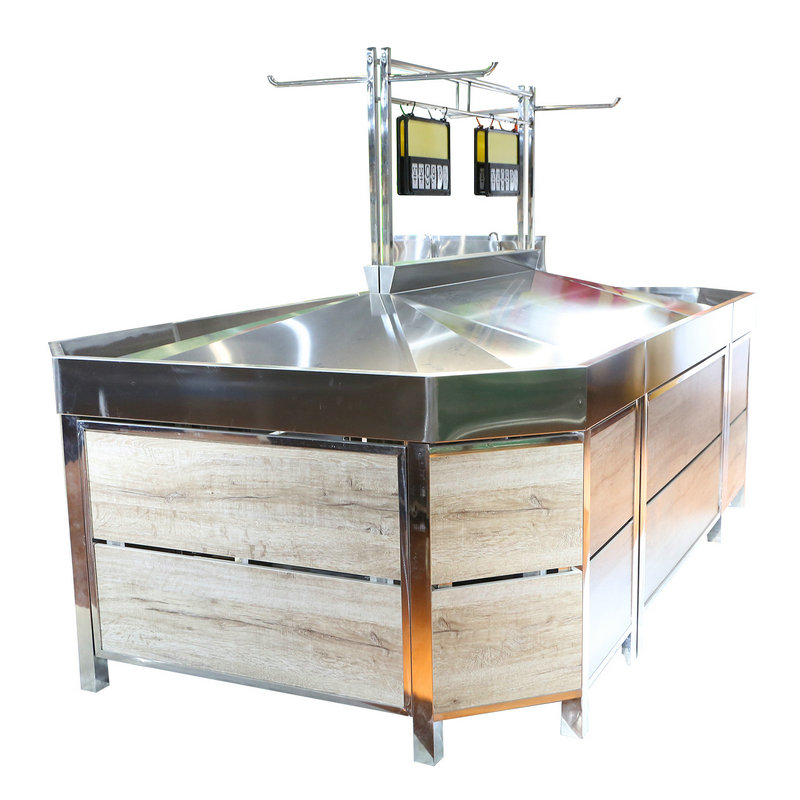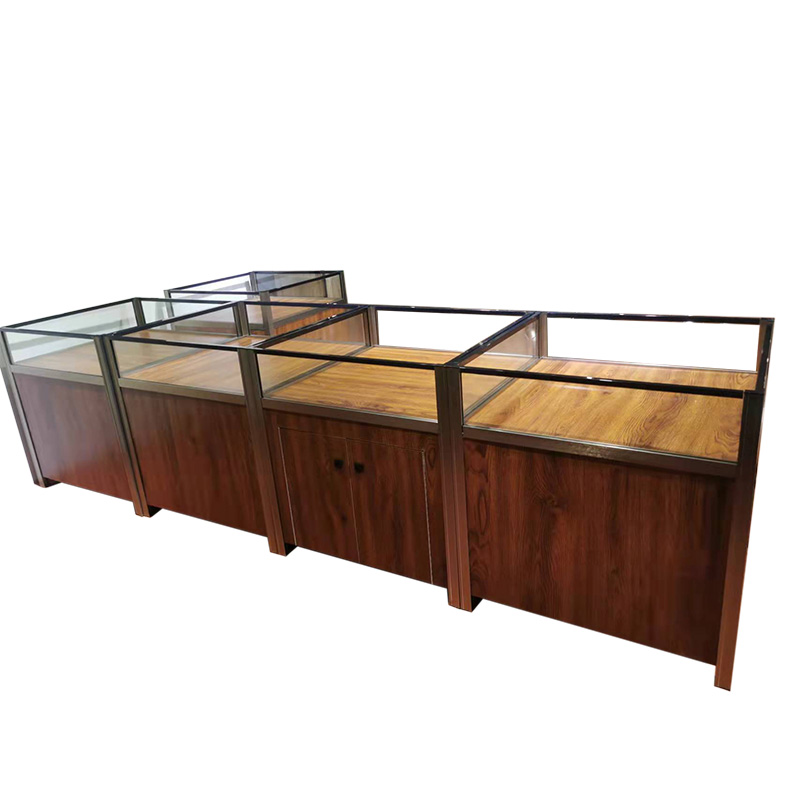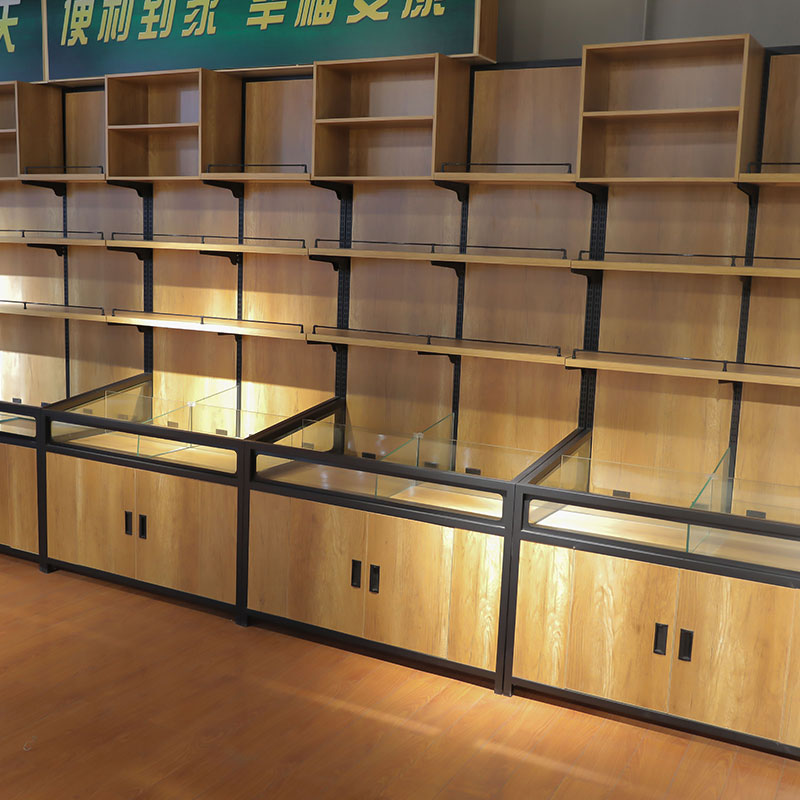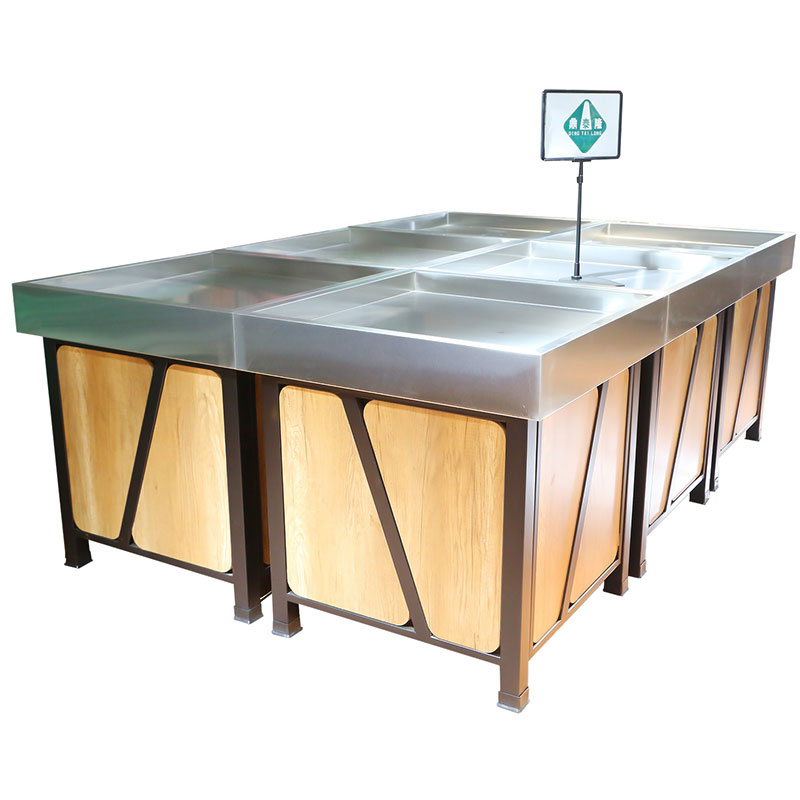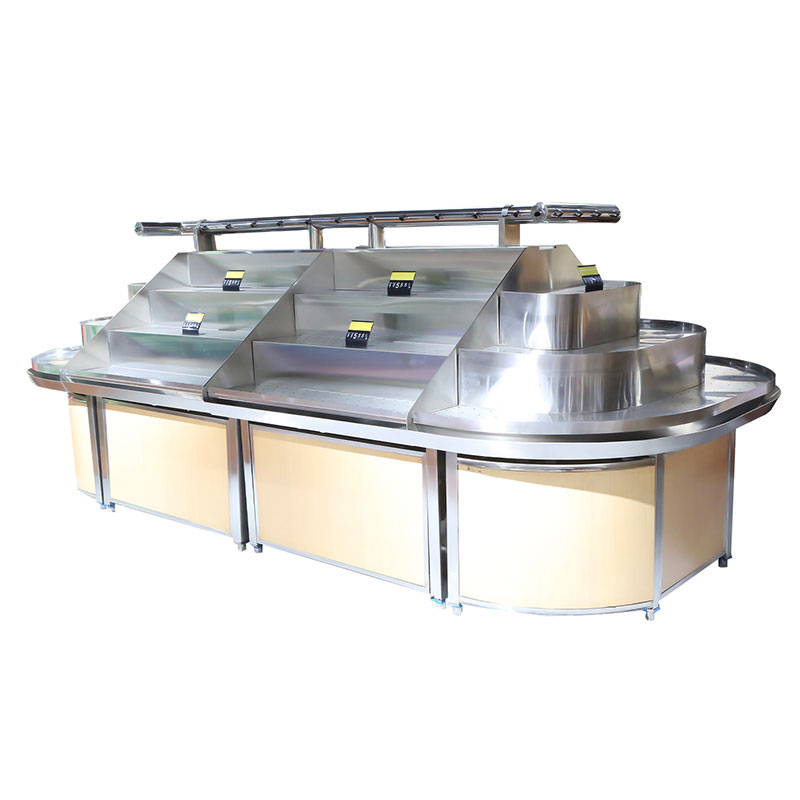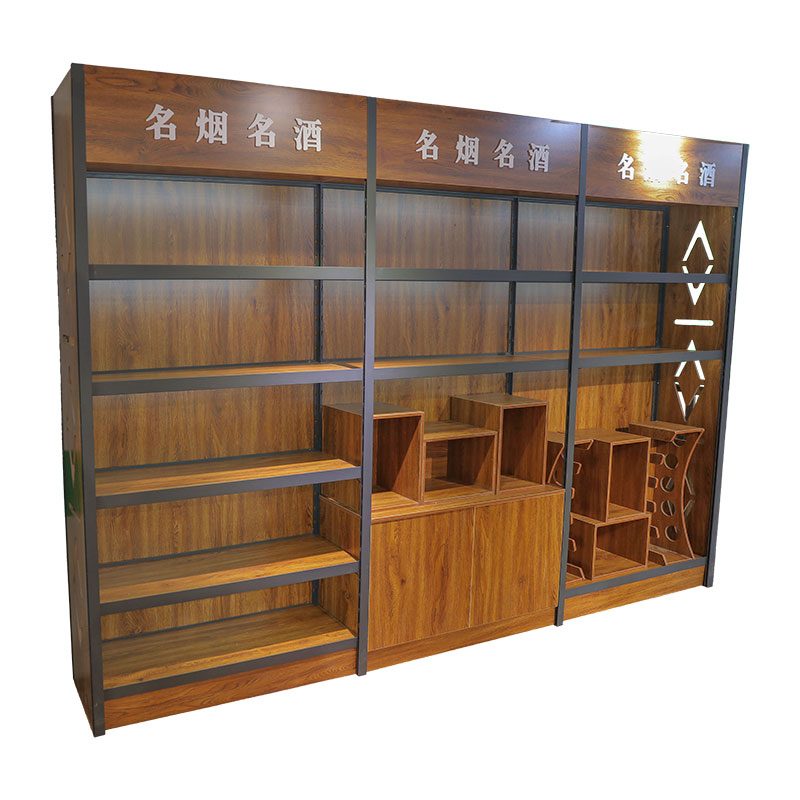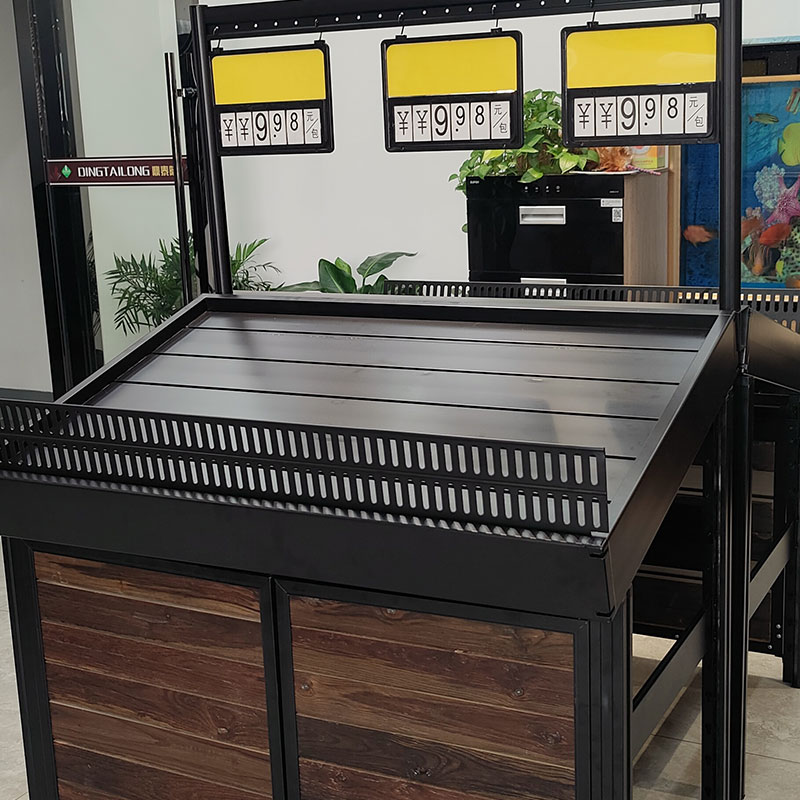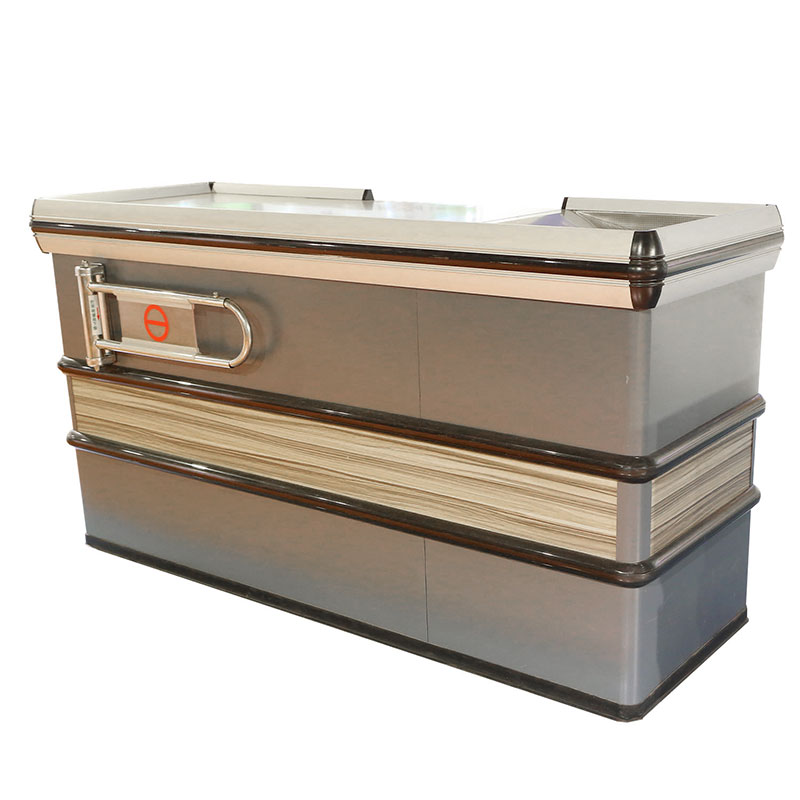The working principle of supermarket shelving is based on a simple yet efficient design that allows for effective organization and display of products. Here is an overview of the working principle of supermarket shelving:
Structural Design: Supermarket shelving consists of a series of vertical columns or uprights connected by horizontal shelves. The columns are typically made of metal and are securely attached to the floor or wall for stability.
Adjustable Shelves: The shelves are designed to be adjustable in height and can be easily positioned at different levels within the uprights. This adjustability allows for customization and flexibility in accommodating products of varying sizes and shapes.
Shelf Supports: Each shelf is supported by brackets or beams that are inserted into slots or grooves on the uprights. These supports can be adjusted to different heights to match the desired shelf position.

Weight Distribution: Supermarket shelving is engineered to distribute weight evenly across the shelves and columns. The materials used, such as steel or reinforced metal, are chosen to provide sufficient strength and load-bearing capacity.
Product Placement: Products are placed on the shelves in an organized manner according to categories, brands, or other criteria. The shelving design allows for easy access and visibility of the products, enabling customers to locate items quickly.
Restocking and Replenishment: As products are purchased or depleted, supermarket staff restock the shelves to ensure a continuous supply. The adjustable shelves make it convenient to rearrange and optimize the space for efficient restocking.
Signage and Pricing: Supermarket shelving often includes provision for attaching signage and pricing information. This allows for clear labeling of products, promotion of special offers, and easy identification for customers.
Display and Merchandising: Supermarket shelving is designed to facilitate attractive product displays and merchandising techniques. Special display units, such as end caps or promotional areas, can be incorporated into the shelving system to highlight specific products or seasonal items.
Maintenance and Durability: Supermarket shelving is built to withstand the demands of a retail environment. The materials used are durable, easy to clean, and resistant to wear and tear. Regular maintenance ensures the stability and functionality of the shelving system.
Overall, the working principle of supermarket shelving revolves around providing a stable, adjustable, and organized platform for displaying and organizing products. The design allows for efficient restocking, easy customer access, and visually appealing merchandising, contributing to an optimal shopping experience.

 English
English русский
русский Deutsch
Deutsch Español
Español 中文
中文